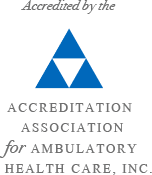What Is Barrett’s Esophagus?
 When you have chronic or frequent acid reflux, the tissue in your esophagus can end up changing. These changes - known as Barrett’s esophagus - are associated with an increased risk of developing esophageal cancer, so it’s important to have the condition diagnosed and treated as early as possible.
When you have chronic or frequent acid reflux, the tissue in your esophagus can end up changing. These changes - known as Barrett’s esophagus - are associated with an increased risk of developing esophageal cancer, so it’s important to have the condition diagnosed and treated as early as possible.
What are the Symptoms of Barrett’s Esophagus?
Barrett’s esophagus does not cause noticeable symptoms from the tissue changes that occur. Any symptoms that you might have with this condition are ones that are associated with acid reflux. These symptoms typically include having heartburn often and having trouble swallowing food. You might also have chest pain when you have long-term acid reflux.
When Should You Seek Medical Care?
If you have had acid reflux for more than five years, you should seek medical care to see if you have Barrett’s esophagus. You have a higher risk of having this condition if you have acid reflux that does not improve with treatment or acid reflux that you need to take regular medication for. Other risk factors include being male, older, overweight, or a smoker. You should seek immediate medical care if you experience chest pain, have sudden trouble swallowing, have bloody vomit or have tarry or black stools, since these can be signs of medical emergencies.
What Are Causes of Barrett’s Esophagus?
Doctors do not know the exact cause of this condition. When you have long-term acid reflux disease, you can develop Barrett’s esophagus as your esophagus attempts to heal damaged cells. Acid reflux causes damage to cells due to frequent exposure to acidic stomach contents. As the esophagus tries to heal, the kinds of cells in it can undergo changes that resemble intestinal cell tissue. In some cases, those who do not have acid reflux end up with Barrett’s esophagus.
Diagnosing Barrett’s Esophagus
Since Barrett’s esophagus can increase your risk of esophageal cancer, you should have it diagnosed as early as possible. Keep in mind that the risk of cancer is small overall, but if you do develop cancerous cells, prompt care helps prevent this disease from getting worse and spreading to other parts of your body. Diagnosing Barrett’s esophagus usually involves the use of endoscopy. During this diagnostic procedure, doctors place a small tube with a camera down your throat. This camera allows doctors to determine if the tissue in your esophagus has changed.
If you do have Barrett’s esophagus, you can expect to have a biopsy done in order to determine how much the tissue has changed. This involves having a small sample of tissue removed from your esophagus and examined. No dysplasia indicates that there are no precancerous cells present, while low-grade dysplasia indicates that there are slight signs of precancerous changes. High-grade dysplasia indicates a high risk of having esophageal cancer.
Treatment and Prevention
Treatment for Barrett’s esophagus depends on how much the tissue has changed. You might need endoscopy to monitor cell changes over time, or you might need surgery to remove damaged tissue in order to lower the risk of cancer. Treating acid reflux is also an important part of treatment and prevention. You can do this by taking medication for acid reflux and making lifestyle changes to prevent it from occurring, such as staying at a healthy weight, avoiding foods that trigger heartburn, and giving up smoking.
If you have frequent acid reflux and are at risk of Barrett’s esophagus, please contact Gramercy Park Digestive Disease Center for an appointment. Our doctors can perform an endoscopy to diagnose this condition.


